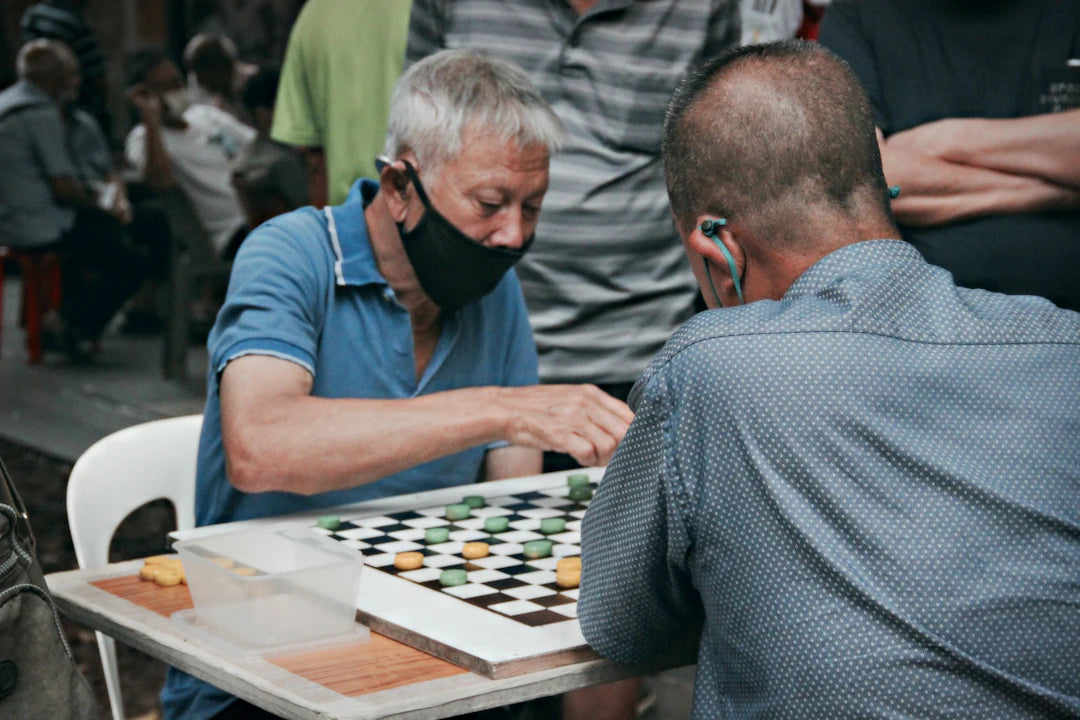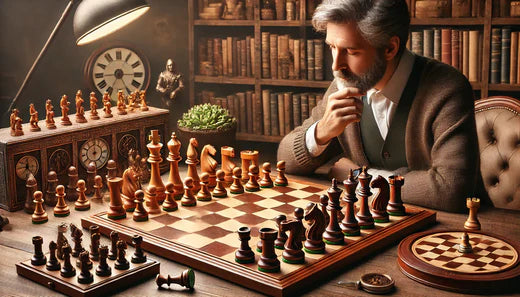Chess is a game that transcends time and culture, capturing the minds of players across centuries. One of the most fascinating aspects of chess is the evolution of the chess sets themselves—those beautiful and intricately designed pieces that have become symbols of strategy, intellect, and art. In this exploration, we will delve into the materials and designs of chess sets throughout the ages, spotlighting the notable Leningrad chess pieces that represent a unique chapter in this timeless history.
From Antiquity to the Middle Ages
The history of chess can be traced back to its origins in India during the 6th century, where it was known as Chaturanga. The earliest chess sets were crafted from simple materials such as wood, stone, and clay. The pieces were often rudimentary in design, as games were more about strategy than aesthetics.
As the game spread across Persia and into Europe, chess sets began to exhibit more intricate carvings, especially during the Islamic Golden Age. Ornate designs featured geometric patterns that were not only visually striking but also symbolised the mathematical complexity of the game.
The Renaissance Influence
The Renaissance marked a pivotal moment for chess set design. With a renewed interest in art and culture, many chess artisans began creating sets that were richly detailed and beautifully crafted. Materials like ivory, wood, and metal became more common. Chess pieces transformed into miniature sculptures, reflecting the class of the players who owned them.
During this period, the chess pieces started to be divided into two clear sides—dark and light—allowing players to distinguish teams easily. The iconic Staunton chess set emerged during the 19th century, created by design innovator Howard Staunton. This set’s simple yet elegant design became the standard for tournament play and is still widely used today.
20th Century Innovations
The 20th century witnessed an explosion of creativity in chess set design. As global communication and commerce flourished, chess sets began to incorporate diverse materials and cultural influences from around the world. For example, Leningrad chess pieces began to gain prominence, renowned for their unique craftsmanship and aesthetic appeal.
Traditionally, Leningrad chess pieces were made from sturdy materials such as plastic, wood, and metal, often reflecting the artistic styles prevalent in Soviet Russia. The pieces typically featured minimalist designs, focusing on functionality while still embodying an air of sophistication.
Global Influence and Cultural Fusion
The latter half of the 20th century also saw chess sets that drew from various cultural legacies. Sets inspired by Asia, Africa, and the Americas introduced shapes and symbols that represented local histories and practices. Indian chess sets often featured the traditional elephant and horse motifs, while African sets showcased beautifully sculpted creatures native to the continent.
As the international chess community grew, there was an increasing demand for chess sets that resonated with players. This led to a trend of customisable sets, where players could select their preferred materials and designs to create a bespoke experience reflecting personal tastes and cultural backgrounds.
Modern Trends in Chess Set Design
In recent years, the rise of online chess has transformed how players approach the game and the sets they use. While digital platforms have made chess more accessible than ever, there is still a vibrant market for physical chess sets that appeal to collectors and enthusiasts alike.
New materials like acrylic, resin, and even glass are being utilised in the creation of chess sets, pushing the boundaries of traditional design. Many modern sets incorporate innovative elements such as LED lighting and magnetic pieces, enhancing the gameplay experience while adding a contemporary flavour.
A Sustainable Approach
Today’s eco-conscious society is also influencing chess set production. Artisans are increasingly choosing sustainable and ethically sourced materials, such as reclaimed wood and environmentally friendly plastics. This modern ethic does not detract from the aesthetic appeal of the sets; instead, it enriches them by telling a story of responsibility and sustainability.
The Role of Artisans and Craftsmanship
Throughout history, artisans have played a crucial role in the development of chess sets. Their skills and creativity have allowed for innovation, variation, and preservation of traditional designs. Many contemporary artisans are reviving ancient techniques, ensuring that the rich history of chess set craftsmanship is not lost.
The love for craftsmanship is evident in the handmade chess sets available today. Each set tells a story, whether it be through the choice of wood, the intricacies of painting, or the labour involved in crafting a single piece. The allure of bespoke Leningrad chess pieces, crafted with attention to detail, highlights the personal connection one can have with their chess set.
Collecting Chess Sets: A Passionate Pursuit
For many, collecting chess sets is a passionate pursuit. Chess enthusiasts seek out unique pieces that speak to their aesthetic and strategic preferences. The variety available—from modern masterpieces to historical replicas—provides ample opportunities for collectors to showcase their individuality.
When considering which sets to collect, players often consider the craftsmanship and the story behind each piece. For instance, the intriguing history of Leningrad chess pieces can inspire collectors not only to appreciate their beauty but also to engage with their historical significance.
Tips for New Collectors
- Research: Understand the different styles, materials, and historical significance of various chess pieces.
- Attend Shows: Visit chess conventions and exhibitions to see sets up close and interact with fellow enthusiasts.
- Build Relationships: Connect with artisans and other collectors to learn about sourcing unique pieces.
- Preserve Value: Consider the long-term value of both aesthetic appeal and craftsmanship when adding to your collection.
Chess Sets as Art and Education
Beyond their role in gameplay, chess sets have evolved into significant art pieces and educational tools. Sets often serve as conversation starters in homes and offices, leaving a mark on the cultural landscape. They are not merely functional tools but also representations of artistic expression and intellectual engagement.
In educational contexts, chess has been incorporated into curricula around the globe. Chess sets designed for teaching purposes often come with instructional materials that highlight strategic thinking, problem-solving, and cognitive skills development. The tactile experience of interacting with physical chess pieces, such as the elegant Leningrad chess pieces, further enhances the learning experience.
Final Thoughts: A Game for Generations
The evolution of chess sets showcases not just the rich history of this beloved game but also the creativity and dedication of artisans throughout the ages. From ancient wooden sets to modern masterpieces crafted from sustainable materials, every chess set tells a story waiting to be explored.
As we continue to appreciate the artistry, utility, and cultural significance of chess, let us remember that every piece played has the potential to connect generations of players. Whether you're a seasoned strategist or a curious beginner, the world of chess and its exquisite sets, including the renowned Leningrad chess pieces, invites you to join a tradition that has captivated hearts and minds for centuries.



